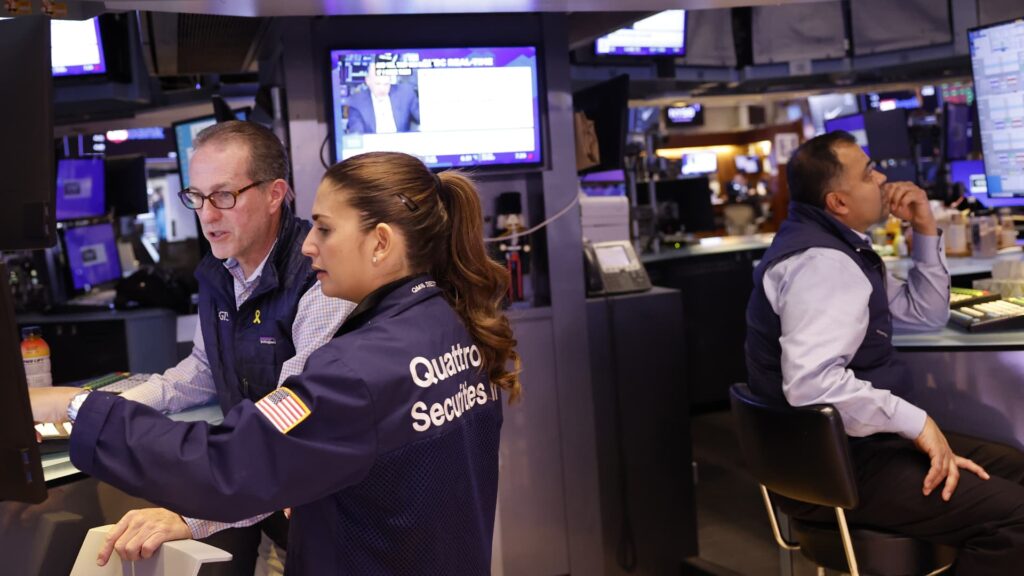Traders work on the floor of the New York Stock exchange during morning trading on May 17, 2024.
Michael M. Santiago | Getty Images
Stock futures slipped in overnight trading following a sour start to the new trading month and final quarter of 2024.
Futures tied to the Dow Jones Industrial Average edged down 70 points, while S&P 500 futures and Nasdaq-100 futures lost about 0.1% and 0.2%, respectively.
In after-hours action, Nike slid about 7% after the sneaker giant pulled its full-year guidance ahead of its CEO change. Elliott Hill will take the helm at Nike on Oct. 14. Fiscal first-quarter earnings at the apparel company topped Wall Street’s estimates, but revenue missed the mark.
The major averages are coming off a losing session as rising tensions in the Middle East dented risk appetite and investor enthusiasm for the new trading period. The Dow Jones Industrial Average fell more than 173 points, while the S&P 500 and Nasdaq Composite dropped 0.93% and 1.53%, respectively.
Oil prices jumped and the CBOE Volatility Index (.VIX) spiked as Iran fired ballistic missiles on Israel. The attack came as Israel began a ground operation into Lebanon and tensions escalated with Iran-backed militant group Hezbollah.
“We came into the day with worries over how long the port strike would impact markets and potential economic growth, but those worries quickly moved to the Middle East,” said Ryan Detrick, chief market strategist at LPL Financial. “The big worry now is should this conflict spiral into a larger scale war in the entire region, which of course could be a major October surprise.”
Technology was the worst-performing sector Tuesday. The S&P 500’s information technology sector shed 2.7% and registered its worst session in nearly a month, led to the downside by megacaps such as Apple, Nvidia, Microsoft and Tesla. U.S. Treasury yields slumped as investors sought safer assets.
Ahead of Friday’s keynote September jobs report, Wall Street on Wednesday will gain insight into the state of private payrolls with ADP’s Employment Survey. Friday’s nonfarm payrolls report could play a major role in the market’s direction and the Federal Reserve’s next rate move as its cutting cycle begins.

